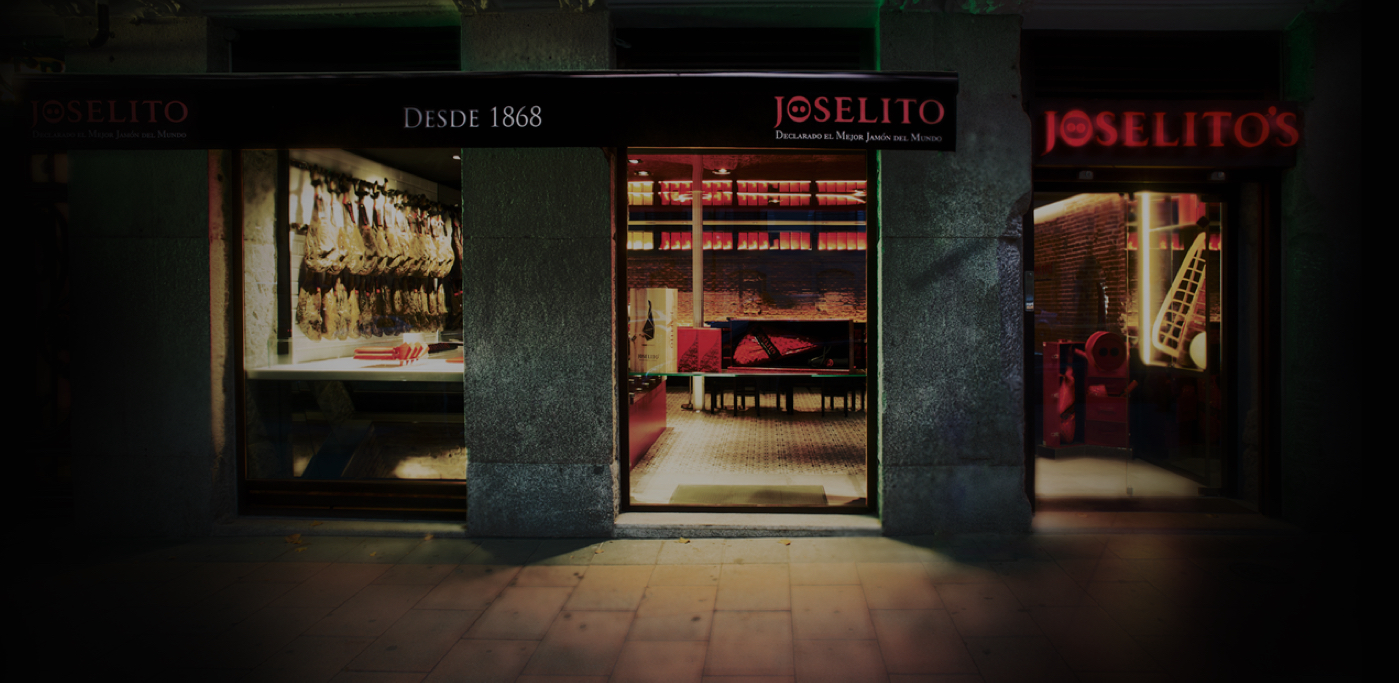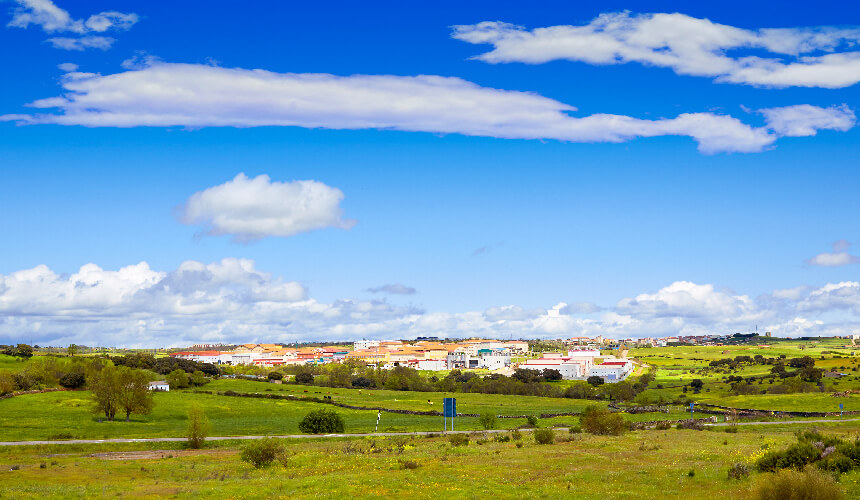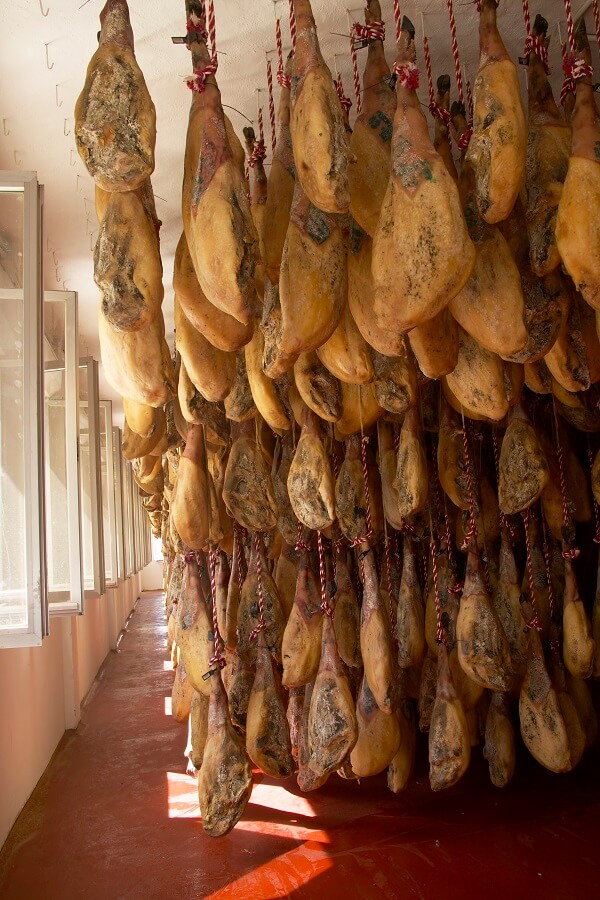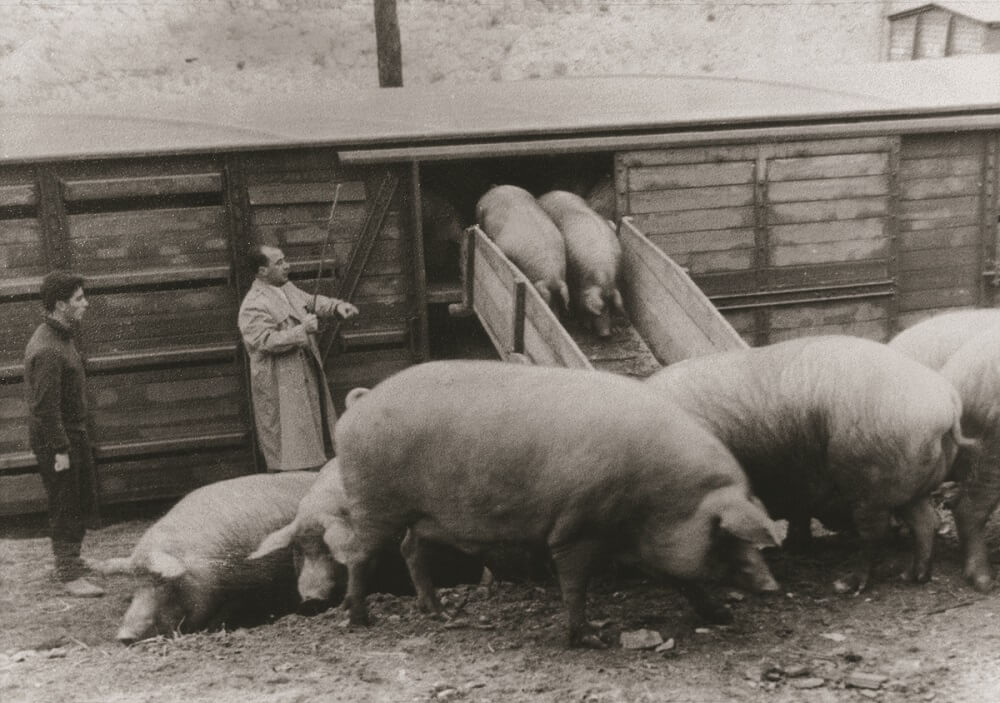

Nicknamed the charcuterie town, with hardly any need to explain why. Guijuelo smells like ham. This is the place with the highest production of acorn fed Iberico hams in Spain and one of the areas with the highest agri-food production in Europe.
The beginning of the charcuterie industry in Guijuelo dates back to the 19th century. One of the first families to specialise in Iberian pork delicacies was the Gomez family, the founders of Joselito. In 1868, Vicente Gómez chose this town to start the family ham production and this was the beginning of the Joselito story, always linked to the village, where today, in natural drying chambers and cellars the best ham in the world is cured.
Guijuelo currently has a population of approximately 5,600 inhabitants, providing more than 5,000 jobs in the meat sector with an equivalent number of indirect jobs. It is an important source of employment for the whole region, not only in the surrounding towns but also in Salamanca, the provincial capital, 50 km from Guijuelo. There are around two hundred meat processors in this town, generating 80% of the Iberian pork production in the country.
The surrounding holm oak countryside is easy to observe, but this is not what makes it the perfect place for ham production. It is its continental climate, which favours the curing of meats and sausages, combined with the expertise and knowledge of those who have been in the profession for a long time. The master ham producers know when to open and close the windows of the drying sheds so that the hams cure naturally.

The town is known for its gusty wind currents, the cold, dry air that comes from the three mountain ranges that surround it (Gredos, Béjar and Francia) provides excellent conditions for the curing of hams. Guijuelo is located a thousand metres above sea level, the same as another of the most famous areas for cured meat and sausage production, Jabugo (Huelva).
The winds in Guijuelo come from all four points of the compass, due to the lack of vegetative protection in the town. Those from the north have a noticeably cooling effect on the environment, those from the north-east increase cloud cover and mist, although there is very little rainfall, which generally comes with the southern winds and the western breeze; the "solanos" (east winds) clear away the mist, preferably on clear, bright days, which are very frequent. The rainfall varies greatly, with a predominance of dry years and hot summers (although not very long-lasting).
At the end of the 19th century, the activity of charcuterie, which had always been conducted in the street and in a very rudimentary manner, began to evolve and become more professional. The beginning of the town's industrialisation was fuelled by the arrival of the railway in 1896. The improved communications boosted trade relations. Guijuelo was accorded the Weekly Market to sell its products and was given the title of Villa.
At the beginning of the 20th century the charcuterie industry was more focused on bacon than on hams, as it was a cheaper product with a much faster production process. In 1935 an important milestone was reached, allowing the meat industry to take root in the town, with the opening of the Municipal Slaughterhouse. By the 1960s, Guijuelo's meat industry, with medium and family-sized companies, had already established itself as a national and world leader for Iberian pork.
Every year in February, the traditional slaughter season of Guijuelo takes place, lasting almost a month, which has been declared a Festival of Regional Tourist Interest. Not surprisingly, since 2009, the town has housed the Charcuterie Industry Museum, with objects as unusual as the drum used in the 1930s for carrying out the draw to establish the order for the slaughter in the Municipal Slaughterhouse. The museum explains the uniqueness of the Iberico pig, shows the traditional cured meat process and the evolution of the industry connected to the history of Guijuelo.
This year Joselito also celebrates the history and achievements made and maintained over time. There have already been six generations dedicated to ham, where each one has contributed something different to the company, which this year celebrates a very special birthday… its 150th anniversary.


No compartimos tus datos. No spam.
No compartimos tus datos. No spam.
No compartimos tus datos. No spam.